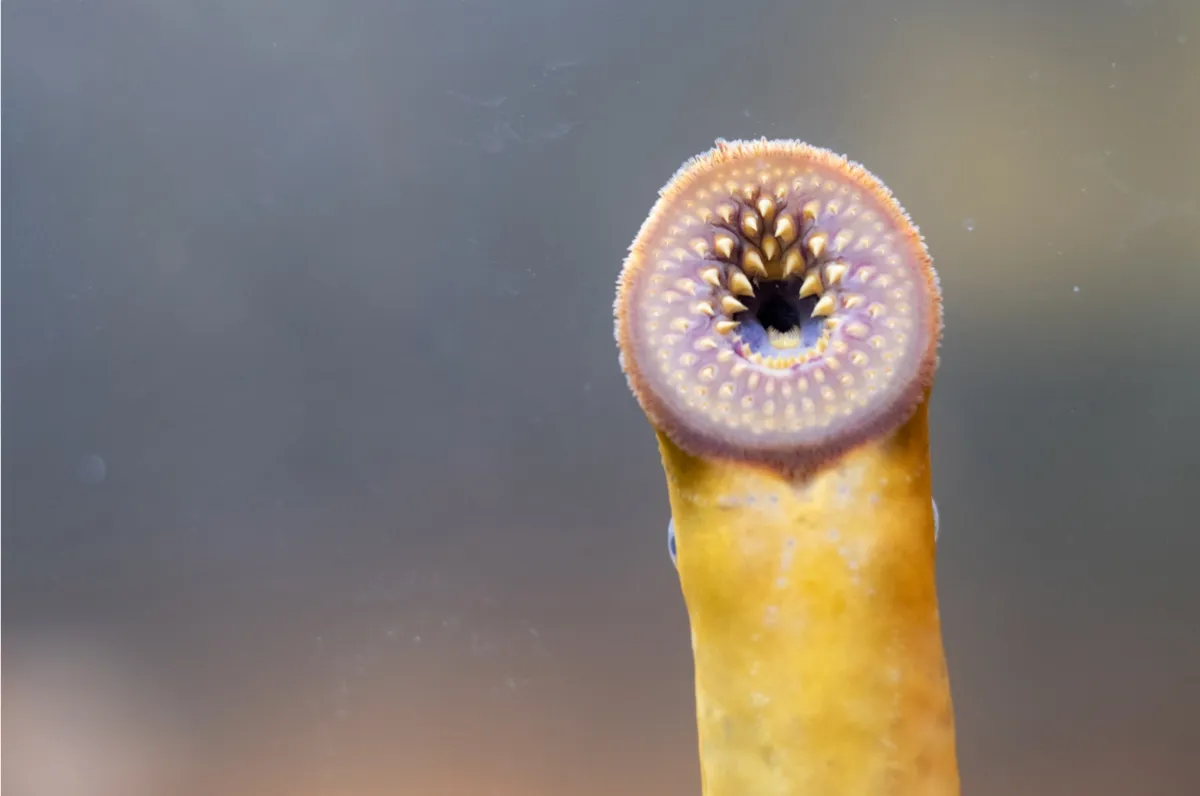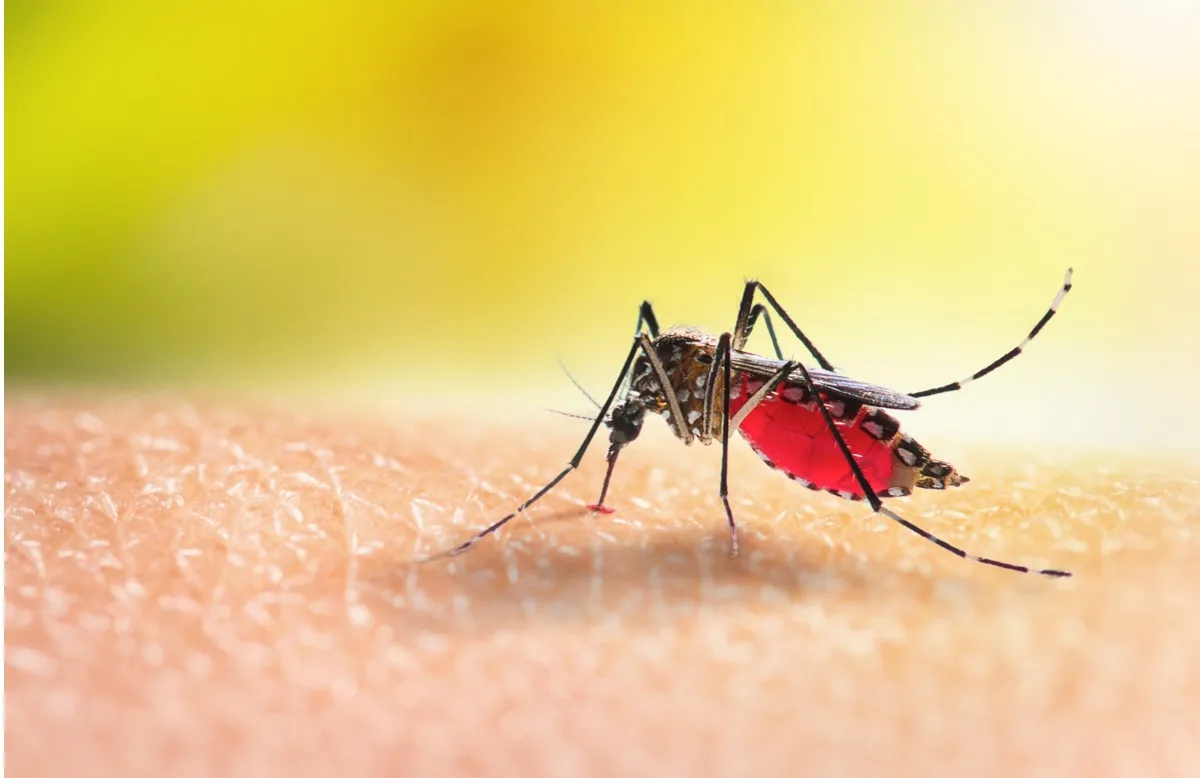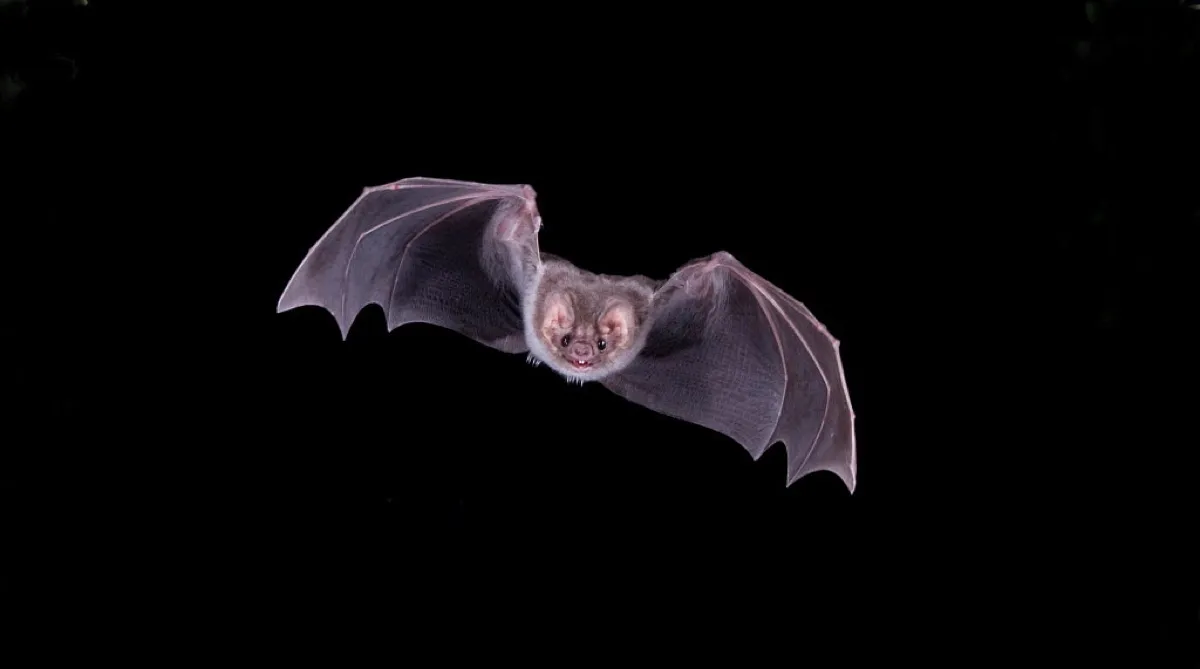Billions of years ago, sometime during the dinosaur era, ancient arthropods experimented with an unusual new diet: blood. Those ancestors of today’s mosquitoes, ticks and bedbugs were some of the first, but certainly not the last, to try haematophagy.
Though relatively rare as far as diets go, haematophagy – or blood-feeding – isn’t something that evolved once, or even in a small collection of closely-related animals. Haematophagy evolved independently at least 20 times in arthropods alone, as well as in a bunch of worms, some fish, and a few birds and mammals. Despite all this diversity in animal form, each coven of vampires had to tackle similar problems to refine their grisly lifestyle.

Why did blood-feeding evolve?
A diet as specialised as blood, a renewable but not easily accessible resource, doesn’t appear out of nowhere. Mouthparts originally used for piercing or cutting other food, like plants, gave prototype blood-feeders a head start. Many were also fortunate to live in the right place, on and around potential hosts, as scavengers, parasites, or even predators. Supported by these ‘pre-adaptations’, it was perhaps only a matter of time before some creature struck blood, discovering deep wells of untapped sustenance flowing just beneath the skin, like a Cretaceous-era oil prospector.
But unlike oil, which is the essence of squished and melted carcasses, blood is alive. It’s always moving, shuttling essential nutrients, oxygen, and everything else around the body. It’s full of electrolytes and protein, making it a better diet than the plant juices and waste that ‘pre-blood-feeders’ would have sustained themselves on.
Read more about predators:
- Vampire squid ancestor was likely a voracious predator
- Geckos that lose their tails are still deadly predators
The nutritional benefit of blood can be clearly seen in lampreys, a group of primitive, jawless fishes with hook-adorned mouths. Lamprey species can be divided into two groups: parasitic, which feed on fish blood and flesh as juveniles, and non-parasitic, which don’t feed on blood.
“Non-parasitic lampreys are pretty much indistinguishable from parasitic lampreys as larvae, but the two types ‘part ways’ during metamorphosis [into juveniles],” says Dr Margaret Docker, an expert in lamprey biology at the University of Manitoba, Canada. Once mature, non-parasitic lampreys are “quite small… much smaller than parasitic lampreys, and even smaller than the largest larvae, since they shrink during metamorphosis.” This suggests that the nutritional benefits of blood could help the parasitic lampreys grow larger than their non-parasitic kin.
Another example of the health benefits of ‘liquid red meat’ comes from vampire moths, some of which feed on humans, and from whom blood-feeding has a clear sexual divide. The male goes through the trouble of blood-feeding, and passes on the extra sodium obtained from his blood feast to his mate as a nutritional child support.
The roles are reversed in mosquitoes, with only the females supping on the red stuff. “Female mosquitoes need a blood meal to develop eggs,” says Dr Ben Matthews, a mosquito expert at the University of British Columbia, Canada. This is because eggs take a lot of resources to nurture, and the protein and iron gained from blood meals are essential for proper egg production.
Male mosquitoes will drink small amounts of blood in a laboratory setting, but die a few days later as blood is toxic to them.
What are the risks of drinking blood?
Consuming large amounts of blood is dangerous, and adapting to this extreme diet poses special challenges. The most straightforward challenge is that a full belly (and blood-feeding stomachs get very full) is heavy, and difficult to move around. No one likes a freeloader, and swollen blood-feeders are at a high risk of counterattacks from their hosts.
The unique composition of blood itself presents problems too. The oxygen-carrying protein haemoglobin accounts for roughly 12 to 20 per cent of human blood by weight, and it’s toxic in large amounts.

Haemoglobin is named after its haem structures, rings of carbon and nitrogen built around a single, central iron atom. If you or I decided to start guzzling a diet of blood, the haemoglobin would be broken down by our digestive system. This would cause the iron to be released from its protective scaffolding, which is where the problems would begin. The iron would start to foist electrons onto oxygen, generating aggressive molecules called reactive oxygen species. These run amok within a cell, tearing up valuable resources like fats and proteins. Iron also likes to incorporate itself into biological membranes, causing them to rupture and leak.
Blood-feeders rely on two strategies to avoid death by haemoglobin overdose. Some stash the haem in pockets made out of special proteins or membranes. Others fuse the haem groups together into large globs called ‘haem aggregates’. Both methods reduce the amount of haem in contact with sensitive cellular structures, and therefore lower the risk of haem toxicity. Counteracting haem toxicity is apparently a universal adaptation to haematophagy.
Read more about blood:
Since haem toxicity is a niche problem that only blood-feeding specialists have, it’s an attractive exploit for medicalinterventions against bloodborne parasites, which also have anti-haem defences. For example, the drugs quinine and chloroquine stop the malaria parasite,Plasmodium, from making haem aggregates, leading to cell damage and death.
The dangers of drinking blood don’t stop at haemoglobin. Plasma, a yellow-tinged fluid that makes up the liquid portion of blood, is about one-quarter of the saltiness of seawater, and handling all that saltiness represents a major physiological challenge. Left unchecked, such high levels of salt ions interfere with biological membranes and proteins critical for survival.
To tackle this, when the kissing bugRhodnius prolixusstarts sucking, it activates a suite of proteins along its Malpighian tubules, the insect version of a kidney. The proteins pick out useful ions and molecules from the meal, and leave most of the sodium, water and other less valuable constituents of blood to pass out the other end. The system is so effective that the insects will relieve themselves while feeding, leaving ugly brown smears on their host.
How do blood-feeders find their prey?
Since their hosts are always moving around, blood-feeders invest a lot of effort into developing their senses to help them locate their prey. For example, mosquitoes use a combination of long- and short-range signals to track their next meal. Sight, smell, heat, humidity, taste, and the ability to sense carbon dioxide, all help mosquitoes to find their prey. Other insects such as bedbugs and fleas sense hosts in a similar way, by detecting movement and body heat.
But mosquitoes are a lot smarter than we give them credit for. Species like Aedes aegypti, which prefer human blood, look for specific odour blends that are signatures of humans as opposed to other mammals. Mosquito species that prefer frogs might eavesdrop on frog song to obtain a blood meal, says Matthews.

When it comes to mammals, vampire bats are the only ones that feed entirely on blood, and they have developed a range of adaptations to suit their grisly suppers. Like other bats, vampire bats use echolocation to navigate in darkness. They also seek out the smell of fur and poo, to guide them to a target. Their ridged nose is dotted with heat-sensing pits, to help them home in on blood flowing just beneath the skin of their prey.
Unlike other bats, however, vampire bats can jump and run by slingshotting themselves forward with their wings. They’ll tend to land and then approach their host from the ground, and their unique way of moving enables them to quickly sneak up on their prey.
Once a blood-feeding species locates its prey, there’s still a lot of work to do. First, they have to get the blood out, ducking out of the way of irritated swipes from their potential host and penetrating thick layers of hide or skin. Generally, there are two ways to approach this: scissors or a syringe.
Animals like vampire bats and lampreys make a small cut with razor-sharp teeth or mouthparts and lap up the resulting pool of blood, a mode of feeding called ‘telmophagy’. Contrastingly, ‘solenophagous’ feeders, like mosquitoes and kissing bugs, pierce their prey with tiny mouthparts, and drink directly from the vessels. The latter method is sometimes slower, but is less painful to the host, and therefore stealthier.
Drawing blood without getting swatted, squished, or thrown off is just the start of the ordeal. Next, any worthy blood-feeder has to neutralise the host’s defence mechanism against blood loss, known as the haemostatic system, as well as its immune system. To do this, they rely on a bespoke arsenal of molecules that stop blood clotting, keep vessels open, and anaesthetise the area.
The proteins carried in the saliva of arthropods have been particularly well-studied. Among this molecular cocktail is apyrase, a common anti-clotting protein that both prevents and breaks down clots. Tick saliva also contains prostaglandin E2, better known as the labour-inducing dinoprostone. E2 is a triple threat for hosts as it simultaneously opens up blood vessels, prevents clotting, and interferes with the cells of the immune system.
Read more about arthropods:
- How high can insects fly?
- Insect populations are dying out. Here's why that doesn't have to be the case
- Giant house spiders: Are they getting bigger?
Blood-feeding saliva typically contains anaesthetic as well, which affects the host’s ability to sense pain and irritation that would reveal the presence of the bloodsucker. Fun fact: the anti-coagulation agent in vampire bat saliva is called ‘Draculin’, named after Count Dracula himself.
While it’s easy to list those obligate blood-feeders, like ticks, most leeches and vampire bats, that must subsist on blood to survive, there is a contingent of lesser-known facultative blood-feeders that only drink the red stuff when it suits them. By occasionally moonlighting as vampires, these blood-feeders supplement their diet with an extra source of nutrients while avoiding the peculiar stresses of the full-blooded lifestyle, like overdosing on haemoglobin.
Several birds are facultative blood-feeders, often hiding their vampiric habits under the guise of pecking at parasites on their hosts’ skin. They include the aptly named vampire finch of the Darwin and Wolf Islands in the Galapagos, which sips on the blood of boobies when seeds and fruits are scarce during the dry season.
Other birds with a taste for blood include African oxpeckers, which are fond of rhinos and other large ungulates, and the Tristan thrush, which has a taste for penguins.
Obligate blood-feeding evolved multiple times in many unrelated animals, and others occasionally experiment with the diet. While the details of their lifestyles inevitably vary, common themes emerge across many distant lineages.
Just like how fictional vampires are marked by their pale skin, nocturnal habits and fangs, real-life vampires share a penchant for brewing up anti-clotting cocktails, packing surgical grade mouthparts, and relying on a variety of other adaptations that enable their extreme diet.
Unfortunately for all these blood-drinkers, beyond a nourishing meal, blood doesn’t provide any extra life-giving properties. That sadly remains the reserve of fiction. Fangs for reading...
The human blood-drinkers
Attitudes towards consuming blood vary widely across cultures and individuals. For many around the world, blood is just ‘liquid meat’, and as common a cooking ingredient as a cut of steak. For example, variations of blood sausage, a dish where the fluid is cooked down, thickened, and mixed with spices and filler, occur across the Americas, Asia, Europe, and elsewhere. Blood can be stewed, deep-fried, congealed, and occasionally sipped raw.
Beyond blood as ‘meat’, there is a small but widespread community of sanguinarians, people who collect and consume blood from willing donors to self-medicate chronic fatigue, headaches, and gastrointestinal issues. The blood drinkers are far from edgy goths, and many wish to find more socially acceptable treatments.
Blood-feeding is taboo for many others for religious, cultural, or personal reasons. Both Islam and Judaism prohibit the consumption of blood, and adherents follow specific preparation procedures to remove it from their meat. Contrastingly, many Christian groups consume the metaphorical blood of Christ (wine) during religious services, though whether they also consume blood at dinner is a matter of personal preference.
- This article first appeared in issue 383of BBC Science Focus – find out how to subscribe here
